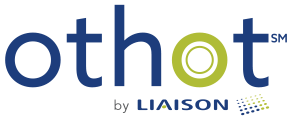Welcome to the first in a series of blog posts that we hope will give you advice and counsel as to how higher ed institutions manage their way through - and out of - the coronavirus pandemic. I’m a believer that what we’re experiencing today is NOT the new normal, and that what we are anticipating and planning for WILL be the new normal. We just don’t know, though, what that state will be; thinking now, however, about how we’ll act is essential. As President Eisenhower said in a 1957 speech (paraphrasing what he’d once heard in the Army), “Plans are worthless, but planning is everything.”
Here’s what we know: higher ed institutions have deep concerns about admissions and retention; this comes as a result of questions related to international student acceptances, the replacement of in-person events with virtual ones, an indication that high school seniors may defer their decisions and/or take a gap year, transfers among institutions, the quality of online education, and students’ and/or parents’ ability to pay, among other things. Bottom line: yield and retention may both very well take a hit.
Add to those messes the unclear state of the stock market and the broader economy, and the financial concerns mount: lost revenue from tuition, housing, student fees, endowments, state budgets, athletics and performing arts ticket sales, and fundraising. And, we are likely in for a long recovery period.
What to do? At Othot, we’re focused on helping institutions use data to optimize the relationship between themselves and individuals. The challenges facing higher ed in the wake of COVID-19 are just the time to use data in this way. Institutions that do so, in the context of other institutional strategies, will be the ones that come out of this stronger.
One place to look first: the impact of the Great Recession on higher ed enrollment. This report gives such insights, but – of course – one needs to put that through today’s lens; demographics are different, the cost and revenue structures have changed; the impact of this downturn is as yet unclear.
Using data to help understand what did happen, what is happening, and what will happen clearly isn’t the only thing institutions should be doing now, but it is a big part of what they should be looking at.
- How do we think about the distribution of financial aid, since the requests are likely to go up? How much aid does a student need in order to accept admission?
- What happens if we emphasize more in-state admissions than out-of-state?
- Or if we emphasize more transfer admissions than in the past?
- What are the top three strategies institutions are deploying after their evaluation of data?
- How much can you trust the data models in what some what characterize as an "anomaly year"?
- How do you balance the short-term concerns with long-term planning?
- Can we get insight on longer-term retention and persistence if we better understand those we are admitting today?
In the Fall 2019 Campus Computing Survey, respondents (primarily higher ed CIOs) indicated that “Data analysis/learning and managerial analytics” was a Top Five Campus Priority, as was “Leveraging IT resources and services to advance the student success/student completion priorities ...” Don’t today’s challenges comprise the perfect environment in which to further invest in these areas? Of course, the human touch is still needed, but using advanced data analytics can provide a core strength of understanding.
Over the next few weeks our team and staff from our partner institutions will be blogging regularly with thoughts and suggestions about how to use data to the best advantage of your institution and your current and future students. We hope it helps.

Fred Weiss





